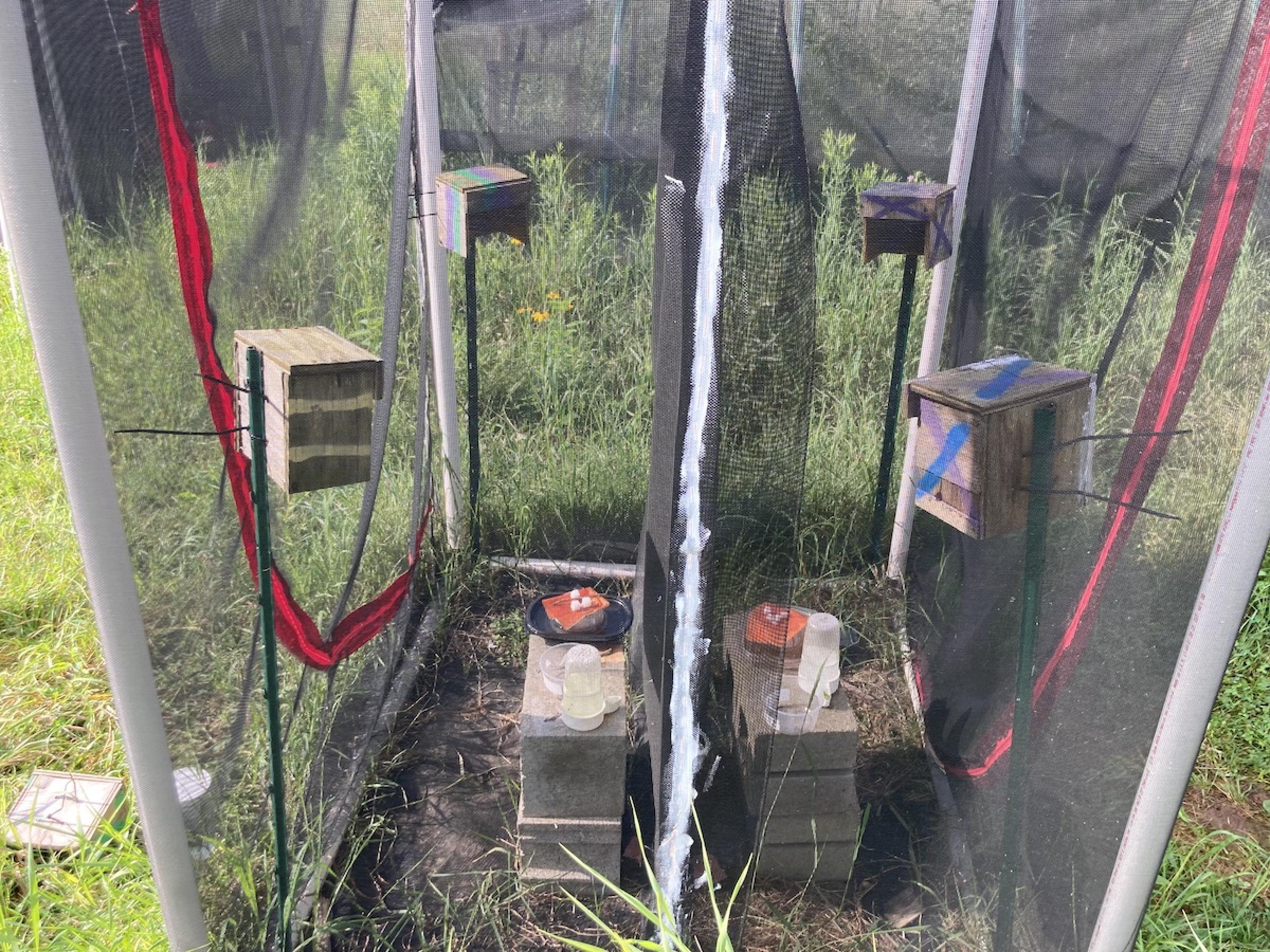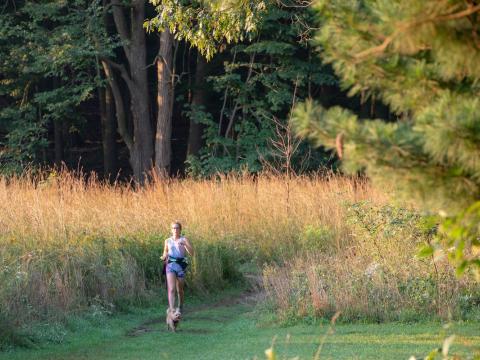
Two paper wasps interact inside a vespiary at Matthaei Botanical Gardens. Scientists are studying wasp interactions to learn how important cooperation is for these insects’ success. Photo credit: Emily Laub, used with permission.


How wasps and humans work together
Cooperation is often valued as the key to success in many human endeavors and now perhaps insect endeavors too, thanks to new research at the University of Michigan.
Wasps aren’t the first critters that usually come to mind when one pictures a prosocial insect, but new research shows that when wasps are good at remembering and identifying other wasps by their facial markings, they are more likely to cooperate with nest tending, which ultimately improves the success of the nests.
“This is really exciting because it means that there is an advantage to being cooperative,” said Emily Laub, a recent PhD graduate from the University of Michigan’s Department of Ecology and Evolutionary Biology who conducted the research with guidance from her thesis adviser, Elizabeth Tibbetts. “We think that cooperation is something that really matters in human society, and the data from wasps seem to support that idea. There’s a social benefit to this specialized cognitive ability that we happen to share with a tiny insect.”
The wasp experiment
Laub measured the benefits of cooperation in northern paper wasp nests by capturing wild wasps in the spring as they began to awake from hibernation. Then, the wasps were brought to Matthaei Botanical Gardens and released into a vespiary, a kind of screened, wooden house with natural plants and 40 nest boxes inside. This outdoor enclosure served as the wasps’ home over the course of the three-month-long experiments. Laub independently conducted two such experiments, one in June 2020 and another in May 2021.
Over the course of the experiments, the wasps did as wasps do. They buzzed around the vespiary, foraged for nectar, hunted caterpillars (some of which were provided by Laub), chewed up wood to make paper for their nests, formed groups, laid eggs, and raised larva. Each morning, Laub checked on every nest in the vespiary, taking notes on which nest each wasp called home. She also filmed each nest for one to two hours on one afternoon each week to record how often each wasp performed aggressive actions — such as asserting dominance and fighting — and cooperative actions — such as co-feeding and encouraging nest mates to begin productive work.
Before adding the wasps to their enclosure, Laub took painstaking efforts to get to know every one of her test subjects. Back in the lab on Central Campus, Laub hand painted a unique, identifying pattern on the back of every wasp with model train paint. With the wasps now easily recognizable to Laub, she assessed each individual’s body weight, personality, and how well they could remember the faces of other wasps.
“These experiments are so special because we know so much about each individual wasp, and we were able to look at how these different traits may or may not interact with how the wasps collaborate and choose groups,” said Laub.
The results
When the experiments ended in August, Laub estimated the success of each nest by counting the number of compartments, which is a proxy for the number of larvae that a nest housed. The biggest nests belonged to wasps that engaged in more social behaviors, and those wasps tended to better remember other wasps’ faces during lab tests.
Laub and Tibbets still don’t fully understand why “smarter” wasps are more likely to engage in collaborative behavior, but “it seems like wasps are better able to monitor the activity of their fellow group members and respond appropriately in different situations when they can remember individuals’ faces,” Laub said.
Partner choice could also determine how collaborative — and by extension, successful — paper wasp nests are. Similar to how humans tend to get along better with their preferred co-workers, wasps may also collaborate better when they pick their partners. At least, that’s the idea that Laub and Tibbetts are just starting to test.
For their new experiment to work, Laub and Tibbetts need to control which wasps form a nest together. The research team is doing this by first putting a subset of wild wasps into a large enclosure, which Laub made by hand-stitching together several camping tents. Inside the tent were several wooden nesting areas where wasps could choose their nesting partners, the telltale sign of which is that two to four wasps roosted together overnight. But, before the wasps could begin their construction project in earnest, Laub moved the newly established groups into one compartment of a divided screen enclosure. At the same time, Laub moved a random collection of wasps that had not already joined a nest group into the other compartment.
Derek Smith tells stories about science and the natural world for a wide audience. He has written for institutions, blogs, and in magazines as a freelancer, intern, and volunteer. His writing has been featured in the ScienceBites blogs and the Matthaei Botanical Gardens and Nichols Arboretum newsletter.

